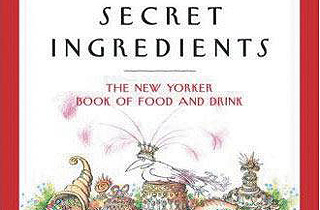Writing about food can be difficult. The subject usually remains silent and motionless through an interview, and the innumerable, exquisite ways that it does express itself to the tastebuds are hard to translate into variations on the word ‘delicious’. If you read Indian restaurant reviews you will have noticed. In this respect, writing about bad meals is lexically simpler than writing about good meals, although a compilation of writing on bad food would be hard to digest. Further adversities of the food writer: great chefs are brusque, patrons are stymied when asked to supply an opinion about their victuals (they end up saying, ‘delicious’) and the most vibrant and precise account of the preparation of a dish is baffling to the many readers, who will not, in truth, know whether amuse bouche are animal, vegetable or mineral.
Great food writing, therefore, is always about the cultural life of food; a writer’s skill with the larger cultural idiom is the secret in the sauce. All the more reason to entrust it to The New Yorker, a magazine that can legitimately claim a role in the evolution of the upscale epicurean idiom as it exists. Even when it is describing foods that are foreign, working class, or in other ways exotic, each article in Secret Ingredients is like the world reflected concavely in a soup tureen: all the place-settings and context are drawn into the picture, with the steaming dish at the centre. So, we open with an ethnography of the ‘Beefsteak’, a gluttonous blue collar banquet tradition. Later we have a political history of vodka that will redefine the phrase Party drink; Zen-like meditations on the ritual significance of tofu; and the personal autobiography of living with — and without — the bagel. Food makes for hearty allegory; the rituals of eating are perfect material for social satire.
Chronological scope is one of the most attractive things about the book. It is weighted towards the present, which is fair enough, although some of the most sparkling pieces are from the 1920s and 30s, when epicurean culture rode a high before getting a dunking from World War rationing. Within each section, articles are ordered date-wise. You can pretend to see patterns in how the language sheds the amiable parochialism of the older pieces, becoming more and more taut and omniscient, until condensing in the shape of Adam Gopnik’s brain in the mid-1990s.
So, the full menu in eight courses: ‘Dining Out’ joins us at the public table, whether covered with cotton-silk or sawdust. Next, ‘Eating In’ provides inspiration to take up spatula (M.F.K. Fisher tucks a recipe into her story of tripe and tribulation) and consolation about the results (Anthony Lane, on the trouble with elaborate cookbooks: “Like sex education and nuclear physics, they are founded on an illusion. They bespeak order, but they end in tears.”).
Then follows ‘Fishing and Foraging’. In ‘Local Delicacies’, writers venture gingerly forth from their metropole to pay tribute to rival empires (Peter Hessler’s exploration of Guangdong cuisine begins with a waitress asking, “Do you want a big rat or a small rat?”). ‘The Pour’ wets the palate and does not suppress Calvin Trillin’s scandalous investigation of whether anyone wearing a blindfold can really tell the difference between red and white wine. ‘Tastes Funny’ goes for belly-laughs (Woody Allen’s Dostoyevskian dieter in ‘Notes from the Overfed’ is brilliant parody); ‘Small Plates’ assembles 12 short items to snack on; ‘Fiction’ provides a sweet finish. A ladleful of cartoons — men in tuxes making unlikely requests of droll waiters — is dribbled across the whole thing.
The result is a well-fed volume containing your year’s worth of food writing (rationed at an article a week, it will last that long), which makes reading about food as much of a temptation as eating it. What can I say? It’s delicious.




